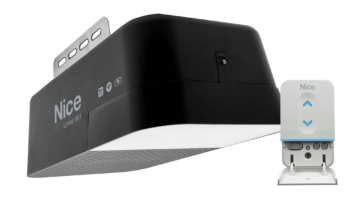[EDITOR’S NOTE: VITAL is in its second year of monthly CI Business Mastery Classes where it addresses important CI business topics via webinars. Each class is supported by an industry brand. VITAL has agreed to share some of the information from these classes in a monthly column of highlights from its most recent webinar. The topics are the same as the previous year’s classes, but the content is refreshed. This CI Business Mastery Class was on optimizing tech productivity, and it was supported by PrepTECH.]

Today we are going to get very tactical with strategies on how to optimize the productivity of technicians. First, we will discuss the “what” and “why” behind productivity and how we measure it in the VITAL method. Then we will introduce you to the three important metrics to keep in mind when measuring productivity. Finally, we are going to talk about ways to improve technician efficiency.
There are many ways to define and measure productivity. At a company level, productivity is a measure of the efficiency of a company’s production process, and that’s usually calculated by measuring the number of units produced relative to employee labor hours or measuring a company’s net sales against employee labor hours or headcount.
Let’s apply these definitions to the work that you do as CI businesses. Why do we care about productivity? When productivity fails to meet a standard or improve over time, it limits potential gains in wages, company profits, and overall stability of the company. Productivity provides a measurement by which to assess the effectiveness of the production department in a CI business and helps to identify systematic issues.
Productivity Metrics
How productive should your technicians be? The answer lies in three basic metrics — labor markup, labor efficiency, and labor margin.
The bill rate to wage rate is your labor markup and ideally this should be at four to five times your unburdened average technician wage. Take what you pay your technicians and average it, then multiply that by four to five times. It may sound like a large markup, but a well-managed team should achieve 60 percent or better labor margin.
Labor efficiency is the measure of billed hours versus total billable hours. Let’s say you spent $12,000 in payroll on technicians for the week and your average wage is $25 an hour. So, you “purchased” 480 hours that week. Let’s say you billed $27,000 in labor for that same week, at a rate of $125 per hour. You sold 216 hours of the 480 that you “purchased.” In order to figure out what our efficiency is, we simply have to divide those numbers — 216 divided by 480 is 45 percent efficiency.
Is that good? Is that bad? The target is 50 percent or higher. Financial efficiency takes into account all the activity of your team, including the unbillable time as well — the trips to the store, non-productive office time, training time, gas station stops, vehicle maintenance trips, etc. All this unbillable time is affecting your financial efficiency regardless of how productive the techs are on-site. Some of that unbillable time, like training, is incredibly important, while much of the unbillable time is just waste.
Labor margin is ultimately where the rubber meets the road. It is the actual financial profit margin or the difference between what we paid in payroll versus what we collected in labor revenue for the same period. The target labor margin is 60 percent or better, which is not easy to accomplish and yet remains as the biggest miss for integrators across the globe. This goal is based on non-burdened rate, and translates typically to a 40 to 50 percent net labor margin after burden.
Optimizing Tech Productivity
Here are some examples on how to produce more billable time on-site, which will allow you to collect more labor revenue every week and limit the time the technicians spend in unbillable time.
Getting techs out the door faster isn’t necessarily about them doing more work. Oftentimes, it just means paying attention to what’s happening, looking at the time, and having a process and an expectation for what happens in your office in the morning. Some of the dealers that we work with drive direct to the job site and have delivery services bring out the materials. That’s probably not viable for some of the smaller organizations, but as an organization grows, that can pay off dividends in having your team take their vehicles home instead of reporting to the office at the end of each day.
Now, this does bring up a conversation on safety. Regardless of whether your team is taking their vehicles home or not, the most dangerous thing your team does every day is drive. Literally, it’s the most dangerous thing — even more dangerous statistically than getting on ladders and lifts. If you think about efficiency and productivity, don’t lose time on a partial day’s reroute. Make sure your team has the stuff they need and make sure that that the job site is ready. If not, always have a plan B.
Then there are the Home Depot and Lowe’s trips that all dealers talk about. We all get frustrated because many of those trips are unnecessary. Oftentimes the techs aren’t thinking about stocking up on those goods. Let’s load some of that stuff up in the shop so that they have what they need. These things are inexpensive and you’re much better off stocking those low-cost parts in-house.
And, of course, we’ve got callbacks, which are such a killer. Post-mortems are so important for finding out what happened and so you know why those callbacks took place and what can be done to eliminate them.
A great work plan is critical in maximizing tech productivity — and it must be done before the techs get on-site. Have someone on your team think through that plan first, and then communicate it clearly. Keeping the same tech on the job is critical. As we all know, it’s tough to shift and get back into the zone. So, if you can keep the same tech on those job sites, you really will increase your productivity. If your state allows it, and you can get your team’s buy-in, you should explore four 10-hour workdays. This provides more time on-site, less windshield time, and the techs often feel a greater sense of accomplishment.
Production meetings are also critical. Have them every single week and talk about what’s working, what’s not working, and how you are doing on hours on specific jobs. That level of visibility alone has made significant improvements in businesses. Limit the surprises. The reason so many of these jobs go over on hours is because there’re job site difficulties that nobody anticipated. Try to identify those difficulties ahead of time and create contingency plans.
Adding more hours to bids is another way to increase labor efficiency. This is truly the biggest issue on the bidding side of the business — not having enough labor in there. Another big issue is how you handle change orders. There’s so much opportunity built into change orders. Stop giving away some of the things that you know you should be getting paid for.
Also, you should update your labor rate every six months — at a minimum — and especially around those times where you are doing your wage increases. Base those changes on the wages you expect to pay in the future. Most of you are doing long-term projects, so the proposal you’re putting together today needs to consider the raises you’re going to be giving over the time period of that project. And you can take a guess on what those increases will be based on the general economic inflation figures.
Key Takeaways
Simply by making your labor metrics visible and reviewing them monthly with your team, you’ll create a subconscious positive change. Taking that a step further will create accountability and reward systems that further enhance your outcomes. And while project efficiency is a useful metric, it can be challenging to get accurate results on a job-by-job basis. You can certainly get there, but in the meantime, use financial efficiency. That’s what shows you the whole picture and you have that data today.







